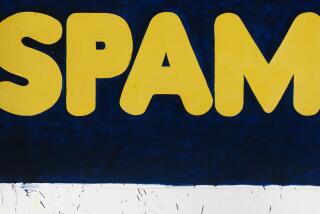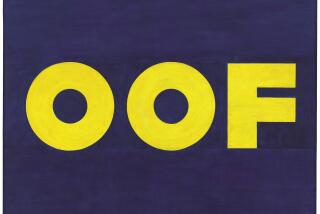Criticism of Ruscha Show Missed the Point
Cathy Curtis’ “review” of the Ed Ruscha print exhibit is unfair. She uses the article to attack Mark Moore, director of the Works Gallery, who curated the exhibit, and Saddleback College for having invited him to curate it.
The exhibit achieved its primary purpose--to bring the work of an internationally recognized artist to the college as an educational experience for Saddleback students and the community it serves. To perceive any unethical conduct with respect to Saddleback College and Mr. Moore’s collaboration is absurd, and the innuendo that the Works Gallery would gain financially is ludicrous.
If Ms. Curtis had done some homework, she might have learned that art galleries and dealers commonly loan works to exhibits that feature artists they represent. For example, the Los Angeles Museum of Contemporary Art is currently featuring a major retrospective of Ed Ruscha’s paintings. The catalogue credits show that two prominent New York art dealers, Leo Castelli and Charles Cowles, have lent the exhibit major works.
For the Helen Frankenthaler retrospective at the Los Angeles County Museum of Art, Andre Emmerich, Frankenthaler’s New York dealer, loaned major paintings. Dealers loaned works for the recent Richard Diebenkorn and David Hockney exhibits. Would Cathy Curtis attack these dealers for loaning works as she does Mark Moore?
Would she snidely imply that the two leading art publishers, Gemini GEL and Tyler Graphics, donate one of every print they publish to Washington, D.C.’s National Gallery and New York’s Museum of Modern Art for financial gain? I doubt it.
Then why does she charge that the Mark Moore and Saddleback collaboration is inappropriate when it clearly isn’t? The collaboration gave Saddleback the chance to introduce its art students to a fine contemporary artist and gave Mr. Moore a chance to serve a college he attended before graduating from UCI in fine arts and going on to develop one of Orange County’s leading art galleries.
DOREE DUNLAP, Professor of Fine Arts, Orange Coast College, Costa Mesa
Cathy Curtis responds: “The letter writers seem to be confusing the practice of commercial art dealers LOANING works to art institutions--which is routine--with the notion of allowing the dealer to CURATE a show. Curating involves selecting work and commenting on it in order to make a particular aesthetic or intellectual point about the artist or his times, or both. If the curator stands to benefit from the sale of the art in question, his reasons for making the selection of work can be viewed as basically financial. The impropriety is a result of the lack of a scholarly, disinterested--not UNinterested--point of view tempering the financial interests of the dealer.”
More to Read
The biggest entertainment stories
Get our big stories about Hollywood, film, television, music, arts, culture and more right in your inbox as soon as they publish.
You may occasionally receive promotional content from the Los Angeles Times.










